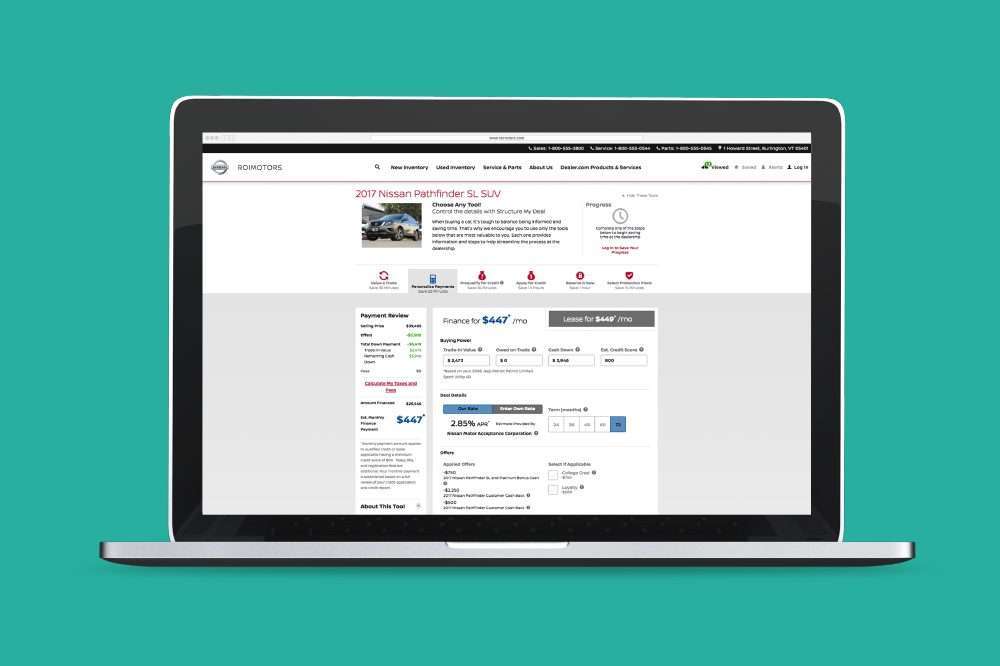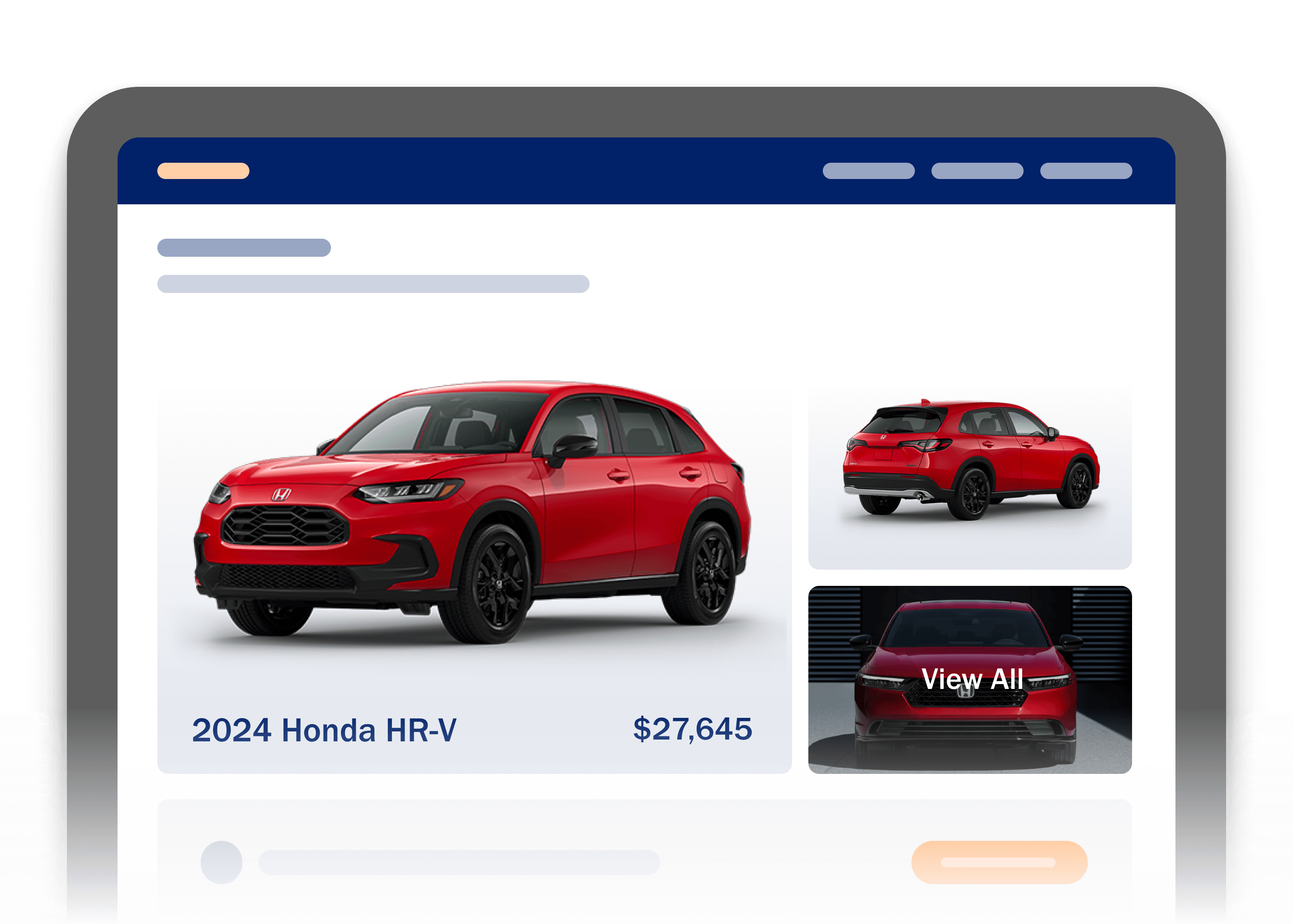An institutional shift toward a Digital Retailing sales model won’t arrive overnight. Neither will it happen without dealers embracing a progressive digital strategy that rewards proactive adaptation and open-mindedness toward the new digital model. While the industry is currently poised for such transformation at a high level, the reality is that the traditional car-buying and car-selling model is something deeply engrained in our culture, and will take some deconstructing if dealers are to realize digital’s true potential.
Which is why we’re here, with four tips to set up your Digital Retailing tools and adopt a strategy that will ensure your dealership isn’t caught operating under the confines of an outdated sales model.
1. Integrate Digital Retailing into your sales process.
Your sales department will need to be trained not only on how to use Digital Retailing, but on how to promote and message the product. In conjunction, there are several steps you can take within your various sales processes to ensure a smooth transition and profitable results to the new tools:
-Create a source in your CRM for your various Digital Retailing channels. Ensure that your teams are able to attribute floor traffic or phone calls to your Digital Retailing tools.
-Update any scripts or talk tracks at your BDC, at reception, and dealership-wide. You are making a serious investment into the future – ensure that anyone who speaks to, emails with, or connects with your customers is comfortable speaking with them about this new process.
-Create distribution rules for the various types of inbound Digital Retailing leads. Your CRM can automate routing of the critical info to the proper departments in your dealership.
-Establish a standard for ‘ownership’ of customers. Create clarity on who owns dialogue with customers – whether they have submitted a finance application, or a trade appraisal – and what is expected for all communication, when and how to provide updates to customers, and how those updates are documented in your CRM.
-Identify any opportunity for in-showroom point of sale. Your customers have taken control of their car buying and used tools that help alleviate anxiety. Don’t resurrect it with confusion about where to go when they arrive at the dealership.
-Hold a brainstorming session with your sales team to connect Digital Retailing to any process steps or informal process steps. This will help you get buy-in from your sales team on this change, as well as identify opportunities to weave these new tools into the day-to-day selling.
-Make clear that F&I is a growth area with Digital Retailing. These tools drive more awareness and opportunity to F&I. In fact, during a study of hundreds of dealers, 30.84 percent of Digital Retailing finance applications were closed, and those closed sales returned 36 percent higher back-end gross than the deals that followed the traditional in-dealership application process.
2. Position Digital Retailing from your customers’ perspective and promote it.
If Digital Retailing is a new product and concept to dealers, then it’s a sure bet that car shoppers have never heard of it, nor its enormous benefits to the shopping experience. Which is why your dealership needs to look at things from your customers’ point of view, specifically the elements most lacking from the traditional car shopping experience: transparency, efficiency, and convenience.
–Advertise the functionality and benefits of Digital Retailing as part of your dealership’s brand. Convey that your website will save customers time by allowing them to submit financial, credit, and trade information, decreasing their stay in your showroom. It’s less of what customers don’t want and more of what they do.
-If you work with an agency, create a video that illustrates the process.
–Build a custom page explaining how your dealership delivers shopping convenience and transparency through these new tools. Add testimonials to the page as you receive customer feedback.
–Create in-dealership signage and displays to reinforce the product and process.
-If you use traditional media, spotlight the functionality and benefits of Digital Retailing to a TV, radio, and print audience.
3. Prepare your team to interact smoothly with deals.
Instead of receiving leads that often require back and forth, you will be acquiring pieces of a deal that help you get incrementally closer to a purchase. This will require a tight partnership and solid communication between sales and the teams that manage inventory, finance, and appraisals.
Spread the stoke. Our industry has been gushing lately over Digital Retailing’s ability to bring convenience and trust to the sales process. Find articles or postings about this and share with all of your teams, and communicate with them about these desired goals.
4. Prepare for the next generation of analytics and interactions.
Our industry has come around to looking beyond leads by focusing on drivers of indirect demand as the importance of traditional form leads gradually decline and sales and website visits continue to rise.
Customers may partially use Digital Retailing’s finance or trade tools and then call or visit, just as they would when calling from a vehicle details page (VDP), or visit your dealership with three VDPs printed out. This is all “Webrooming” (the opposite of Showrooming), and it’s critical to understand and communicate with your team how this is drawing convenience-based trust and indirect demand, even from customers that only partially interact with Digital Retailing.
With Digital Retailing up and running, there are additional tasks required. But don’t think of it as work. Think of it as making the most out of the investment and establishing your dealership as an early adopter of technology that is changing the way shoppers buy cars and dealers sell them.
Patrick Wyld is a Digital Retailing Performance Manager at Dealer.com



